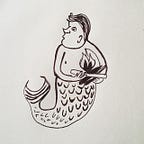Design Beyond Empathy
Designers are obsessed with one emotion. It’s not a bad emotion, there’s nothing wrong with it, it’s just… there are so many emotions other than empathy, and understanding them is crucial to getting good design outcomes.
Before I make the case for emotional literacy as a foundational skill for designers, let’s explore the context of empathy. The context of design is the world of work, where the conversation about any kind of emotions is welcome, because for a long time it was not OK to talk about emotions in the world of work.
Rationale. Objective. Data-driven. These are the words we associate with successful decision making in business. We’ve attempted to cut ourselves off from our emotional intelligence and/or the emotions we experience when we “walk into the office” (or the study from which we now work at home) and all of a sudden we think we’re super-human — somehow making decisions without the influence of anything but objective data.
Truth be told, the opposite is true. We know from neuroscience that the rational part of our brain that we thought made decisions actually justifies them after we already make them. We make decisions based on our emotions, and the hint is in the name — e-motion, the energy that puts us in motion.
Why did you marry your partner, for example? I’ll bet the answer is less than logical!
What many people don’t realise, though, is that this same approach applies to business decisions. Why did you hire this person? Why did you make this decision? Because of your gut feeling?
Despite what we may want to believe, we can’t just compartmentalise our emotions and prioritise our rational mind. We go with our gut. Studies have shown how people who have injuries to the head where they lose connection to their emotions are incapable of making decisions entirely.
This is all known by most designers I speak to. In starting to talk about emotions, the design community has become somewhat obsessed with one particular emotion, and that is empathy.
There’s nothing wrong, and a lot good about empathy. Talking about empathy reminds us that we do feel, that we feel with others, and that it’s OK to feel with others. Empathy helps us put ourselves in other people’s shoes, which can be a helpful thing to do as a designer.
Empathy has also become something of an identity. People who talk about empathy stand for bringing more to the office than our rational brains. People who work in an empathetic way bring energy and enthusiasm, and often build deep relationships with others.
So what’s not to love about empathy?
Some people talk about the burden of empathy. Empathy can be tiring. We can’t be empathetic all day long without being exhausted. Some have also challenged whether empathy can prevent us from making decisions that can be really useful to the people we are designing for.
But my biggest beef with design’s obsession with empathy doesn’t actually have to do with empathy at all. My problem is design’s obsession with one emotion. By focusing on one emotion, designers miss their role to pay attention to all emotions as valuable, human, and crucial to successful design outcomes.
Why do I believe that emotions are crucial to successful design?
Emotions are the energy that moves us
Our emotions influence our behaviour, the decisions we make and action we take. Given that design involves developing an understanding of complex challenges & opportunities, emotions help us to understand and navigate unknown and uncertain situations, and to understand our relation to them.
We all experience multiple emotions, all the time
“We experience a bouquet of emotions” — Julio Olalla
Let’s be honest. To think that we can be just empathetic is slightly ludicrous. We all experience emotions, all of the time.
Let me be clear: I’m not talking about being emotional. Some people describe people as “getting emotional”, by which they tend to mean that someone displays their emotions, perhaps in an overt way. Let’s not confuse displaying emotions with having emotions.
Having emotions is what keeps us alive, and helps us survive. The ability to
It’s natural that we have emotions, and we have multiple emotions all the time. Not just empathy.
Emotions are a crucial context for design
Given that we all have emotions, and that they shape our behaviour and thoughts, why don’t they form part of design education?
Emotions form a crucial context for design. Think about it: every person, every group, every organisation and system all express configurations of emotions.
Emotions are a skill, and they can be learned. Emotions are not unpredictable or random, they have a logical structure that can be understood so we can work with. They can also be used and harnessed to create powerful new contexts for design.
Some people have confused emotional intelligence with emotional literacy. Emotional inteligence can be measured by various tests, but like IQ, it’s not very useful to designers. The challenge with ‘intelligence’ is that it’s something we ‘have’, more than something we ‘learn’.
By contrast, emotional literacy is something we can all develop. In my work, I help people understand their own emotions and how to work with the emotions of others. Some of the most fun workplaces and the best teams are those that work with, rather than against these emotions.
If you’re interested to learn more about emotions and how we design with them, sign up toDesigning Transitions at https://www.designingtransitions.com/
